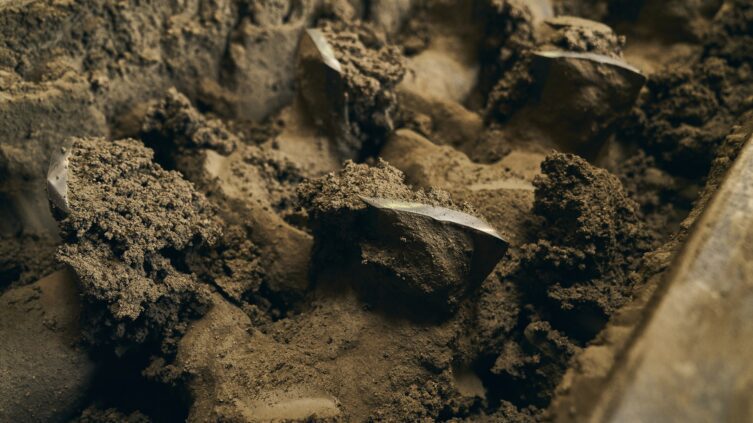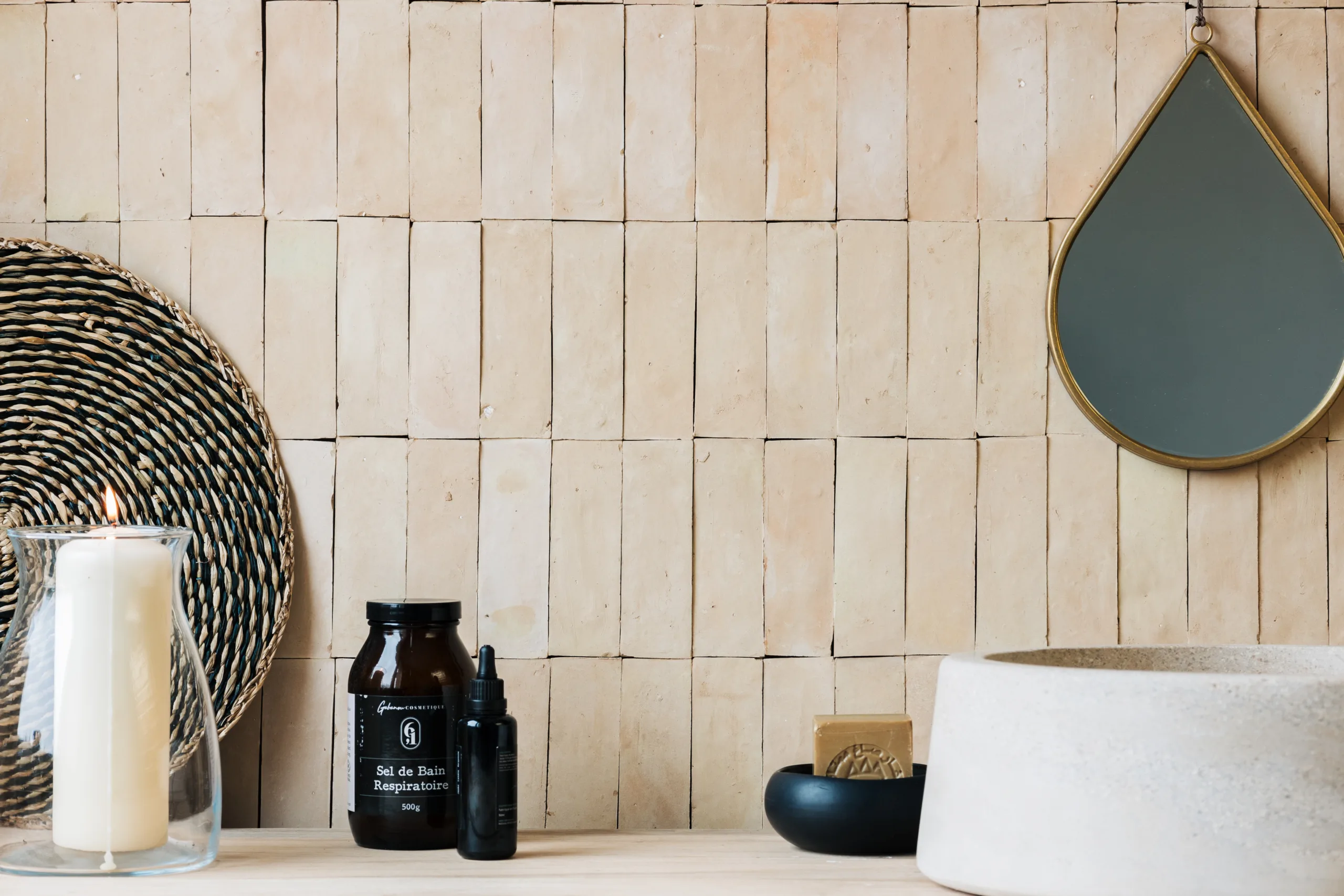Introduction
Zellige tiles are handcrafted tiles made from clay, known for their intricate geometric patterns and vibrant colors. Originating in Morocco, they are a key part of Islamic art and architecture. This article explores the history of Zellige tiles from their early beginnings to their modern revival, focusing on their development over time and their cultural significance.
Early Beginnings of Zellige Tiles
Origins and Initial Uses
Zellige tiles date back to the 10th century, during the medieval period. The term “Zellige” comes from the Arabic word “al zulaycha,” meaning “little polished stone.” These tiles were used in Islamic culture, emphasizing geometric and abstract designs due to religious prohibitions against depicting living beings.
The initial use of Zellige tiles was primarily in religious and public buildings. They adorned the walls, floors, and mihrabs (prayer niches) of mosques, creating an environment that was both spiritually and visually enriching. The small, intricately cut pieces of tile were assembled into complex mosaic patterns, showcasing the artisans’ skill and dedication.
Influence of Early Islamic Culture
Islamic culture played a crucial role in the development of Zellige tiles. Early uses of these tiles were in religious structures like mosques and madrasas. The Great Mosque of Cordoba in Spain, for example, features early examples of Zellige tile work, highlighting the spread of this art form across the Islamic world. These tiles were not just decorative but also served as a reflection of the divine, embodying principles of symmetry, balance, and infinite design.
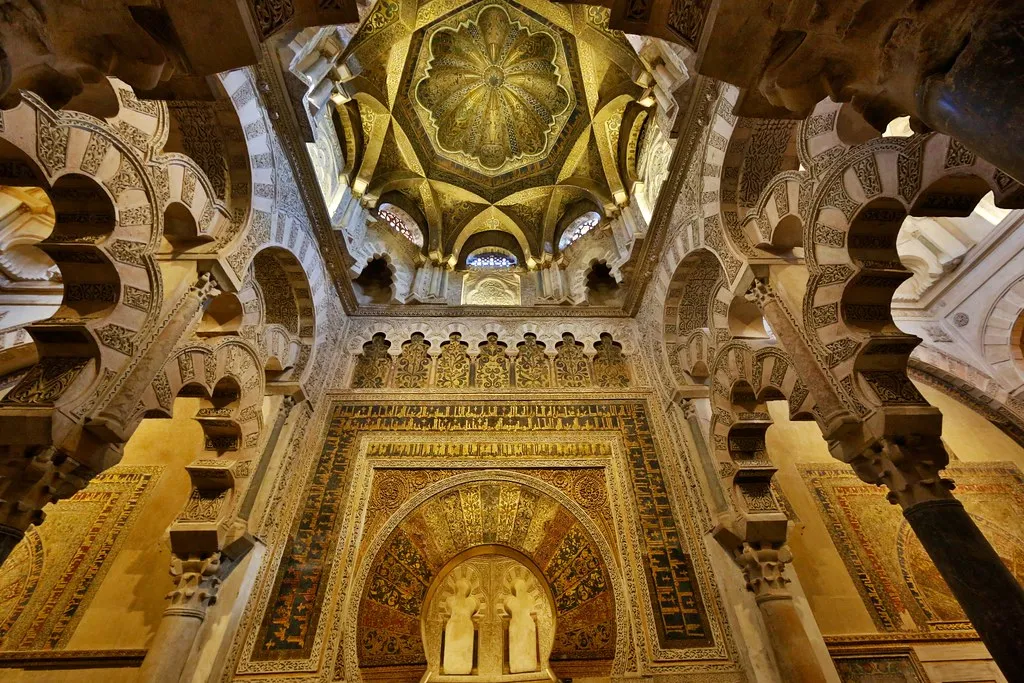
The artisans’ dedication to their craft was influenced by Islamic artistic principles, which emphasized the importance of geometry and abstraction. This was partly due to religious beliefs that discouraged the depiction of living beings in art, leading to a focus on intricate, non-representational designs.
Medieval Development
Expansion During the Medieval Period
The use of Zellige tiles expanded significantly during the medieval period, especially in Moroccan cities like Fez and Meknes, which became renowned centers for tile making. By the 11th century, the production of Zellige tiles had become a sophisticated craft, with specialized workshops dedicated to their creation.
The Almoravid (1040-1147) and Almohad (1121-1269) dynasties were particularly instrumental in promoting the use of Zellige tiles. The Almohad dynasty, known for its architectural innovations, incorporated these tiles extensively in their buildings. Notable examples include the Tinmal Mosque and the Koutoubia Mosque in Marrakech. These structures are characterized by their elaborate tile work, which combines aesthetic beauty with structural functionality.
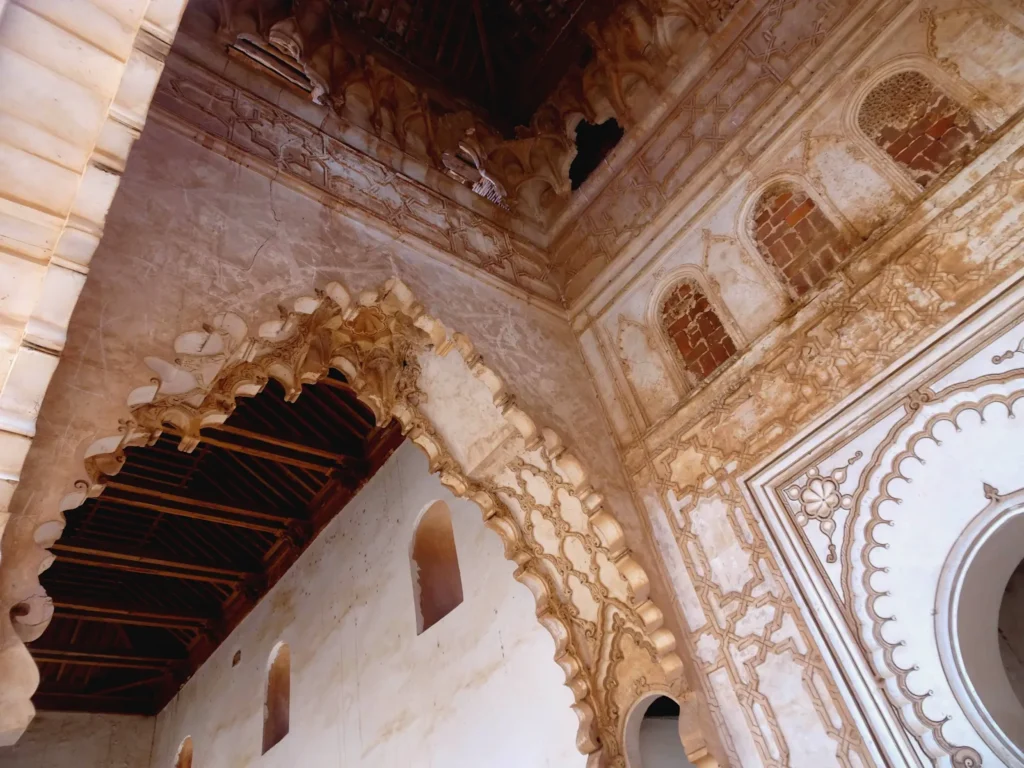
Key Regions and Dynasties
Several Moroccan dynasties played crucial roles in the spread and development of Zellige tiles. The Almoravids and Almohads promoted their use in public and religious architecture, which helped to establish Zellige tiles as a significant element of Moroccan cultural heritage.
The Almohads, in particular, were known for their architectural advancements. The Tinmal Mosque, constructed in the 12th century, is one of the finest examples of Almohad architecture, featuring extensive use of Zellige tiles. Similarly, the Koutoubia Mosque in Marrakech, built under Almohad rule, showcases intricate tile work that exemplifies the skill and artistry of medieval Moroccan artisans.
Renaissance and Further Evolution
Changes and Innovations During the Renaissance
The Renaissance period brought significant changes and innovations to Zellige tile making. This era, characterized by a revival of classical learning and artistic experimentation, saw Zellige tiles being influenced by new artistic trends and techniques. The introduction of new colors, achieved through advanced glazing techniques, expanded the palette available to artisans. Blues, greens, yellows, and reds became more prominent, adding to the visual complexity of the tiles.
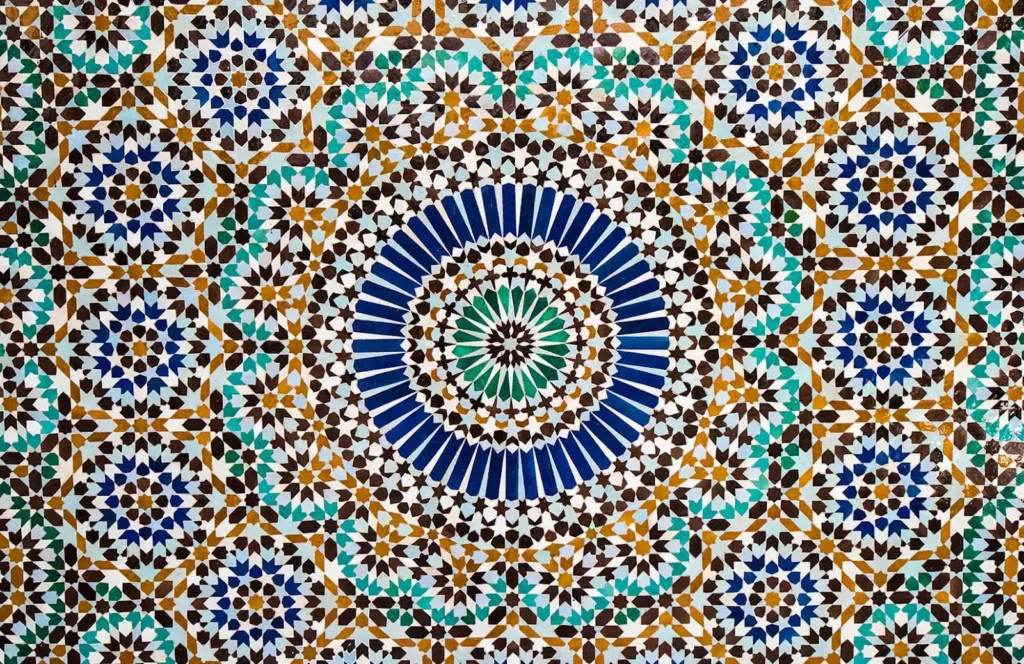
Impact of Cross-Cultural Exchanges
Cross-cultural exchanges during the Renaissance also had a profound impact on Zellige tiles. As trade routes expanded and interactions between different cultures increased, Moroccan artisans were exposed to new ideas and materials. This led to the incorporation of diverse influences into Zellige tile designs, blending traditional Islamic motifs with elements from other artistic traditions.
For instance, the influence of Andalusian art is evident in many Moroccan Zellige designs from this period. The exchange of artistic techniques and styles between Spain and Morocco during the Al-Andalus period enriched the craft of Zellige tile making, resulting in more intricate and colorful designs.
Influence of Islamic Art and Architecture
Integration in Religious and Secular Buildings
Islamic art and architecture heavily influenced the design and use of Zellige tiles. The integration of these tiles into both religious and secular buildings highlights their versatility and aesthetic appeal. In religious architecture, Zellige tiles were used to embellish the walls, floors, and mihrabs of mosques. These tiles, with their intricate patterns and vibrant colors, created an atmosphere conducive to worship and reflection.
In secular buildings, such as palaces and public baths, Zellige tiles added a touch of elegance and luxury. The Alhambra in Granada, Spain, built during the Nasrid dynasty (1232-1492), is a prime example. The palace’s walls and courtyards are adorned with elaborate Zellige tile work, showcasing the artisans’ skill and creativity.
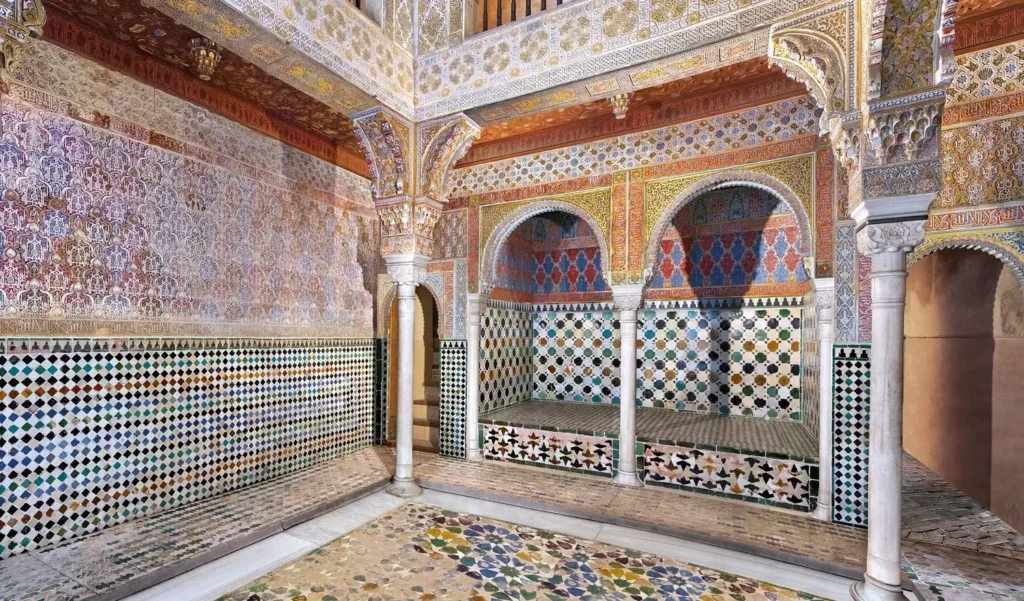
Artistic and Cultural Significance
The artistic and cultural significance of Zellige tiles cannot be overstated. They are not just decorative elements but also serve as a reflection of the rich cultural heritage of the Islamic world. The use of Zellige tiles in architectural projects was a way to demonstrate wealth, power, and artistic sophistication.
In the Alhambra, for instance, the intricate tile work reflects the palace’s status as a center of political and cultural power. The tiles’ complex geometric patterns symbolize the mathematical and scientific knowledge of the time, while their vibrant colors and polished surfaces convey a sense of luxury and refinement.
Key Historical Periods in Zellige Development
Detailed Look at Significant Historical Milestones
Several key historical periods were pivotal in the development of Zellige tiles. One of the most significant was the Al-Andalus period (711-1492), during which Islamic rule in Spain fostered a rich cultural and artistic exchange. The use of Zellige tiles in Al-Andalus was a testament to this vibrant period of cultural flourishing. The Great Mosque of Cordoba and the Alhambra are two iconic examples of Zellige tile work from this era.
Notable Architectural Examples
- Great Mosque of Cordoba: Originally constructed in 785-786, this mosque features early examples of Zellige tiles that highlight the intricate geometric patterns characteristic of Islamic art. The mosque’s mihrab, in particular, is adorned with stunning Zellige work, demonstrating the artisans’ mastery of the craft.
- Alhambra: This palace complex, begun in the 13th century, is renowned for its stunning Zellige tile work. The Hall of the Ambassadors and the Court of the Lions are particularly notable for their elaborate tile designs. The use of Zellige tiles in these spaces adds to the palace’s overall splendor, making it one of the most visited historic sites in the world.
Influence of Moroccan Dynasties
The development of Zellige tiles continued under various Moroccan dynasties. The Saadian dynasty (1549-1659) and the Alaouite dynasty (from 1666 to the present) both contributed to the preservation and evolution of Zellige tile making. The Saadian Tombs in Marrakech, with their exquisite Zellige decorations, and the Alaouite royal palaces are testaments to the enduring legacy of this art form.
The Saadian Tombs, rediscovered in 1917, are particularly significant for their extensive use of Zellige tiles. The tombs’ walls and floors are covered with intricate tile work, showcasing the artisans’ skill and attention to detail. The Alaouite palaces, built over several centuries, also feature elaborate Zellige decorations, reflecting the dynasties’ commitment to preserving traditional Moroccan craftsmanship.
Modern Revival
Influence on Contemporary Design
The influence of historical Zellige tiles on contemporary design is evident in the growing popularity of these tiles in modern interiors. Designers and architects around the world are incorporating Zellige tiles into their projects, drawn by their unique aesthetic and rich cultural associations. Whether used in kitchens, bathrooms, or outdoor spaces, Zellige tiles bring a touch of Moroccan elegance and craftsmanship to contemporary settings.
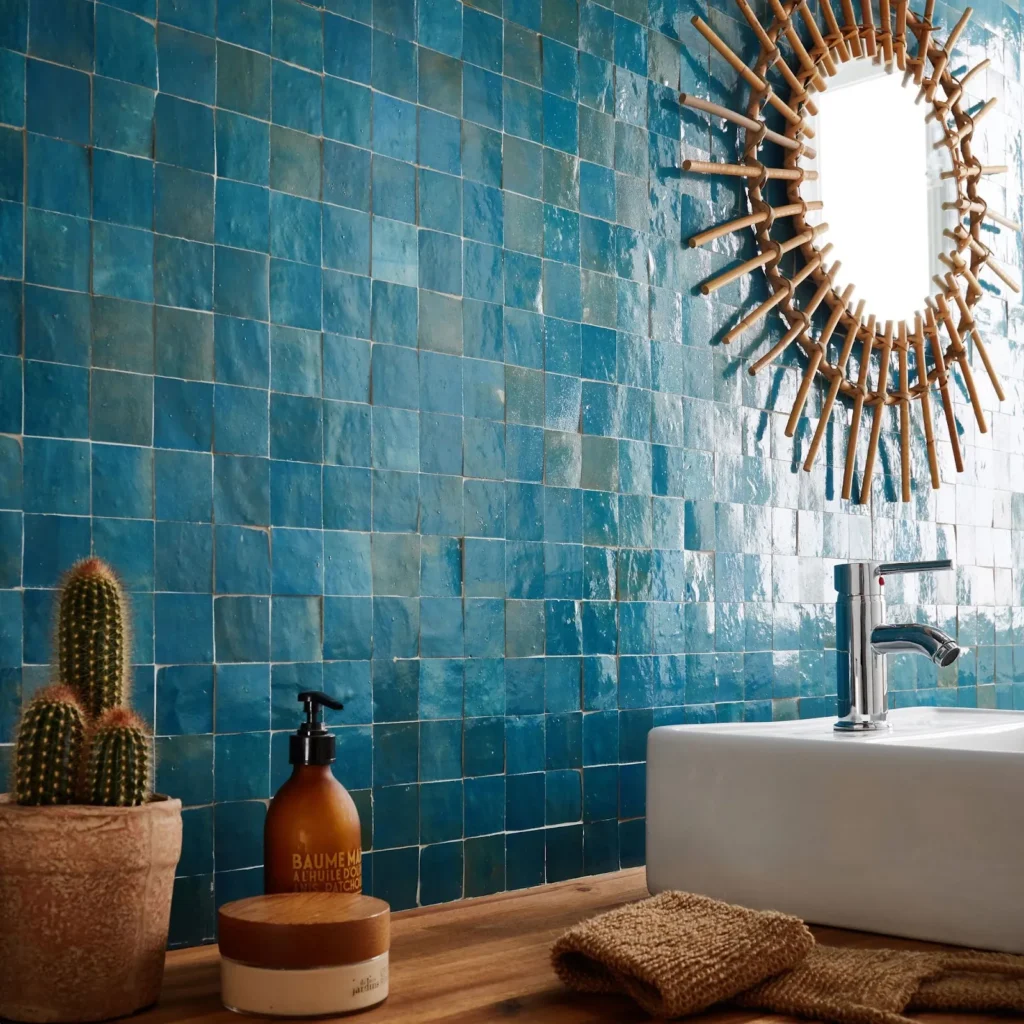
In modern design, Zellige tiles are appreciated for their ability to blend traditional beauty with contemporary style. The tiles’ vibrant colors and intricate patterns add a unique visual appeal to any space, while their handcrafted nature brings a sense of authenticity and craftsmanship.
FAQ
What are Zellige tiles?
Zellige tiles are handcrafted mosaic tiles made from clay, primarily produced in Morocco, known for their vibrant colors and geometric patterns. See the best Zellige Guide.
What is the historical significance of Zellige tiles?
Zellige tiles reflect the artistic and cultural heritage of the Islamic world, particularly in Morocco, and have been used since the 10th century.
How are Zellige tiles made?
They are made from natural clay, shaped, sun-dried, fired in kilns, hand-cut into shapes, glazed, and assembled into mosaics. Read a comprehensive guide about Zellige Crafting.
What are some famous examples of Zellige tile work?
Famous examples include the Alhambra in Spain and the Great Mosque of Cordoba.
How did Islamic culture influence the development of Zellige tiles?
Islamic culture’s emphasis on geometric and abstract designs led to the development of Zellige tiles, avoiding figurative representation.
How have Zellige tiles evolved over time?
Zellige tiles have evolved through various periods, with changes in colors, designs, and techniques influenced by cultural exchanges and technological advancements.
How are Zellige tiles used in modern design?
They are used in kitchens, bathrooms, and outdoor spaces, blending traditional craftsmanship with contemporary aesthetics.
Why are Zellige tiles considered an important part of Moroccan heritage?
They embody Morocco’s artistic and cultural traditions, with craftsmanship passed down through generations, and remain a symbol of the country’s rich history.


